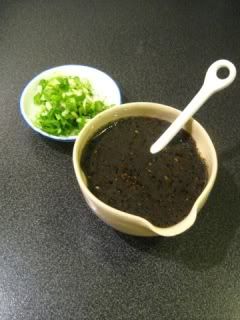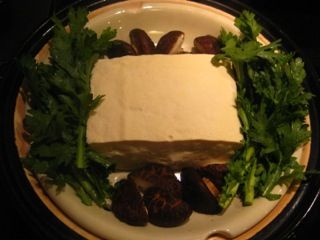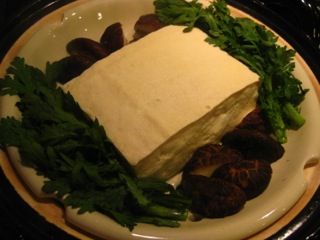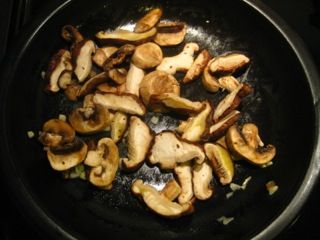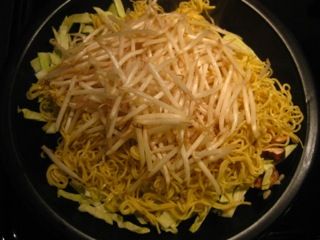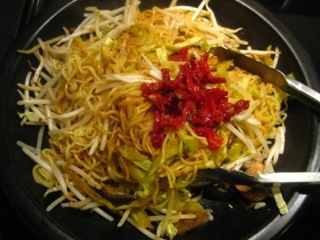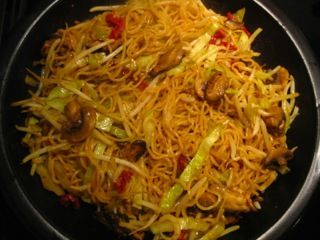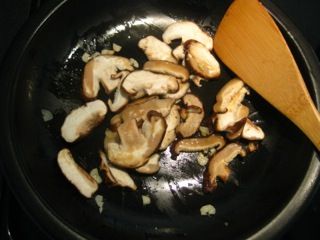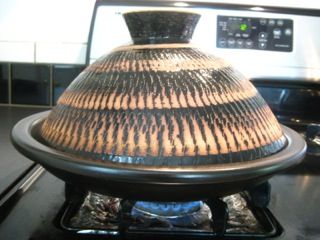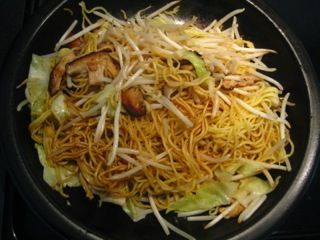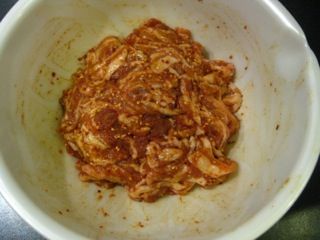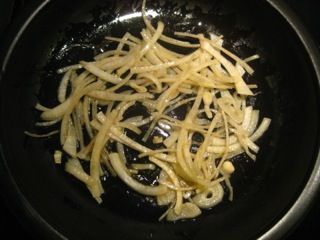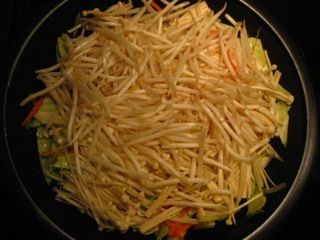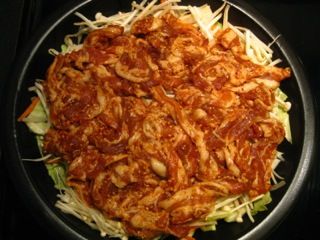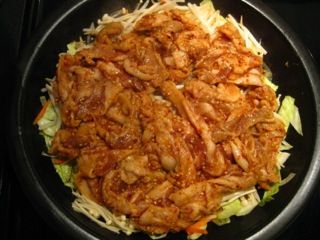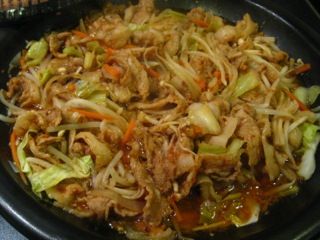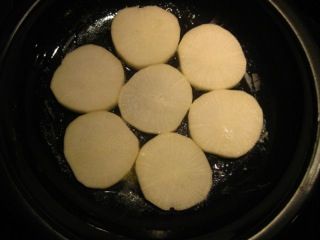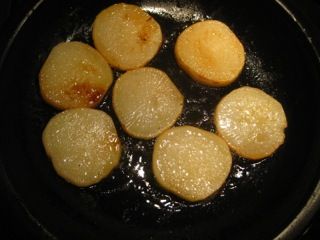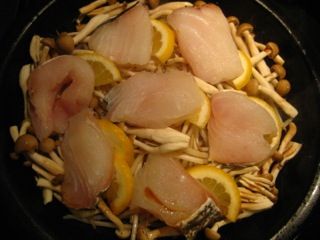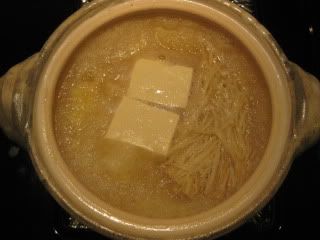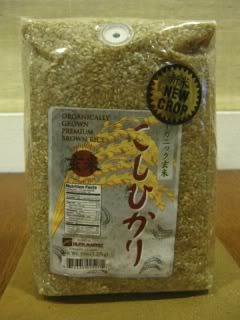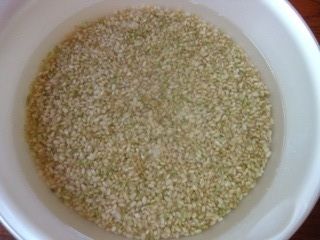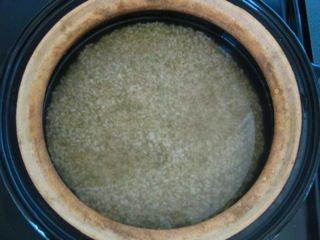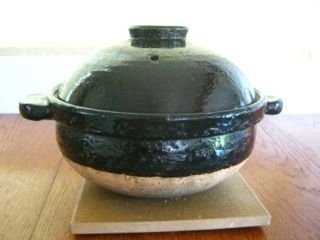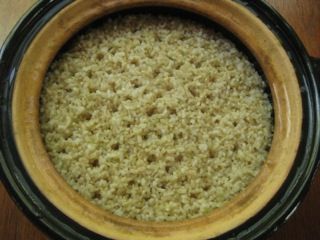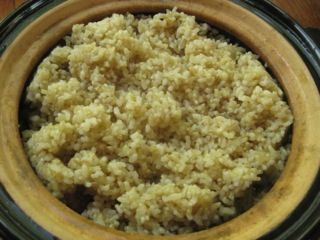When we have dinner guests at home, we sometimes makes donabe bibimbap, and it's always a big hit. We cook the rice in the
double-lid donabe rice cooker, "Kamado-san", and assemble the rice and toppings in the
tagine-style donabe, "Fukkura-san", for a nice sizzling effect. People often fight for the crusty part of the rice!
For this dish, I like to make with brown rice. I partially polish the whole brown rice at home with my
home rice polisher, so that the brown rice can cook just like white rice. But, if you don't have a home polisher, you can find partially-polished brown rice at Japanese market, or you can also make
whole grain brown rice...it's always gorgeous.

Vegetable "namul" toppings are prepared separately.
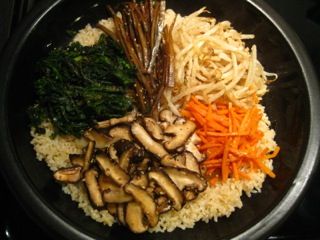

Cooked rice is transferred to "Fukkura-san", and topped with the vegetable "namul" toppings. Once the rice starts sizzling and the crust is made in the bottom, egg yolks are placed in the center and ready to be presented at the table.
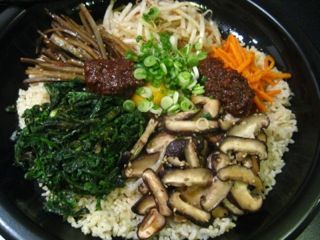
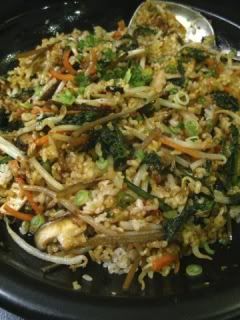
Gochujang paste and sliced scallion are added and everything is mixed together before being served into individual bowls.
Here's the update recipe of my "Sanchae Bibimbap" or Korean-style vegetable mixed rice.
Sizzling Korean-style vegetable mixed rice ("Sanchae Bibimbap")
Ingredients: (5 servings)
2 rice-cups (360 ml) short grain rice
1.5 cups plus 2 tablespoons (400 ml) water
("namul" dressing)
1.5 tablespoons toasted white sesame seeds, ground
1 small clove garlic, grated
1/4 teaspoon raw brown sugar
1/4 teaspoon light color soy sauce ("usukuchi shoyu")
1/4 teaspoon salt
1 1/2 tablespoons sesame oil
1/2 tablespoon olive oil
1 dry red chili pepper, thinly sliced into rings or 1/2 teaspoon red pepper flakes
6 oz (180 g) soybean sprouts or mung bean sprouts
6 oz (180 g) chrysanthemum leaves ("shungiku") or spinach
3 oz (90 g) carrot, julienned
1 tablespoon olive oil
4 oz (120 g) burdock root ("gobo"), julienned
1 tablespoon sake
1 tablespoon mirin
1 tablespoon soy sauce
1 teaspoon white sesame seeds
1 tablespoon olive oil
6 medium-size shiitake mushrooms, thinly sliced
1 tablespoon sake
a pinch of salt
1 teaspoon white sesame seeds
1 tablespoon sesame oil
2 egg yolks
1 scallion, thinly sliced crosswise
3-5 tablespoons Korean hot bean paste ("gochujang")
Procedure:
- In "Kamado-san", combine the rice and water, and cook according to the basic plain rice instructions.
- Meanwhile, prepare the "namul" (vegetable salad) toppings. In a small bowl, whisk together the ingredients for the "namul" dressing. Set aside.
- (Bean sprout "namul") Blanch the bean sprouts in boiling water for 10 seconds. Drain well. Mix with 1 tablespoon "namul" dressing. Set aside.
- (shungiku "namul") Blanch the chrysanthemum leaves in boiling water (salted) until wilted (5-10 seconds). Drain and rinse in cold water. Gently squeeze out the excess moisture and cut into 2" (5 cm) long. Mix with 1 tablespoon "namul" dressing. Set aside.
- (carrot "namul") Blanch the carrot in boiling water for 45-60 seconds. Drain and pat dry. Mix with 1/2 tablespoon "namul" dressing. Set aside.
- (gobo "namul") In a saute pan, heat 1 tablespoon olive oil and sauté the burdock root over medium heat for a few minutes.
- Add the sake, mirin, and soy sauce. Cover again and cook until the burdock root is tender and the liquid is reduced to almost nothing (10-15 minutes). Meanwhile, stir a few times.
- Turn off the heat. Add the sesame seeds and stir. Transfer to a plate and set aside.
- (Shiitake "namul") Wipe the sauté pan. Heat 1 tablespoon olive oil and sauté the shiitake mushrooms over medium heat for until they are soft (3-4 minutes). Add the sake and continue to sauté until the mushrooms are cooked through.
- Add a pinch of salt and the sesame seeds. Stir again. Turn off the heat and transfer to a plate and set aside.
- To assemble, Heat 1 tablespoon sesame oil in the skillet of "Fukkura-san" over medium-high heat for 3 minutes. Make sure to coat the oil evenly over the entire surface of the skillet.
- Turn the heat down to medium, and add the cooked rice from "step 1". Spread evenly to the inner edge of the skillet. Add all the "namul" vegetables one by one and spread evenly over the rice.
- Cover with lid and cook for 4-5 minutes or until the the rice is sizzling. (If you are not sure of the doneness, you can open and carefully check the bottom side of the rice by using a spoon to make sure the bottom is nicely browned.) Turn off the heat and let it stand for 3-5 minutes.
- Uncover, place 2 egg yolks in the center. Add the scallion and 3 tablespoons of gochujang and mix well with a large spoon. Add more gochujang if you like and mix again. Serve immediately.
Happy donabe life.
